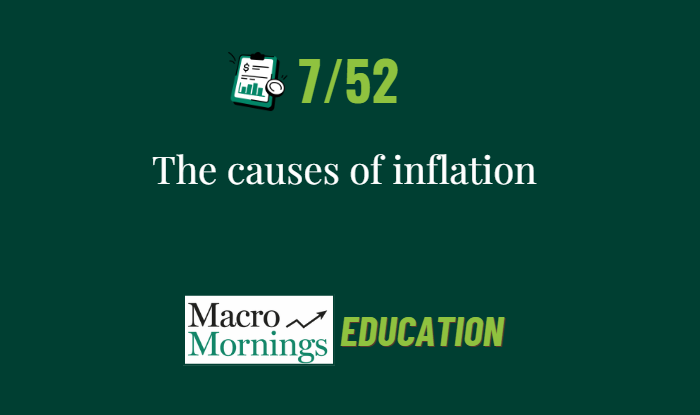New here? This is part of a 52-week series on macroeconomics designed to build your knowledge step by step. Feel free to catch up on previous emails here if you'd like to start from the beginning!
"Macro Mornings is thriving - now read in 48 states across the U.S. and 120 countries worldwide. Join thousands of investors who rely on us to stay ahead of the markets!"
Dear all,
In our last email, we introduced the concepts of inflation and deflation.
Today, we’ll focus on the various causes of inflation and how understanding these can help you better manage your finances.
Inflation can be caused by several factors, but the most common ones are:
Demand-Pull Inflation
This occurs when demand for goods and services exceeds supply.
Imagine a booming economy where everyone has more money to spend.
As consumers rush to buy more products, businesses can’t keep up with demand, so they raise prices.
A classic example is the post-World War II economic boom in the United States, where strong consumer demand led to rising prices.
Cost-Push Inflation
This happens when the cost of production increases, leading businesses to raise prices to maintain their profit margins. , if the price of oil spikes, transportation and manufacturing costs rise, and these costs are often passed on to consumers in the form of higher prices for goods and services.
A recent example is the inflation seen in 2021 due to supply chain disruptions and rising energy costs.
Built-In Inflation
Also known as wage-price inflation, this occurs when workers demand higher wages to keep up with rising living costs, and businesses then increase prices to cover these higher wages.
This can create a feedback loop where wages and prices continuously push each other higher.
Monetary Inflation
When a central bank increases the money supply too rapidly, it can lead to inflation.
If more money is chasing the same amount of goods and services, prices will rise.
For example, in the 1970s, many countries experienced high inflation due in part to excessive money supply growth.
Understanding these causes can help you anticipate inflationary trends and make better financial decisions.
For example, during periods of demand-pull inflation, you might see rising stock prices as companies benefit from increased consumer spending.
However, during cost-push inflation, you might want to invest in commodities like oil or gold, which tend to retain their value when production costs rise.
In our next email, we’ll discuss how inflation affects your savings and what you can do to protect your purchasing power.
Alessandro
Founder of Macro Mornings
BECOME MY FRIEND
💎 Get your Mentorship FREE here
🎙 PODCAST




